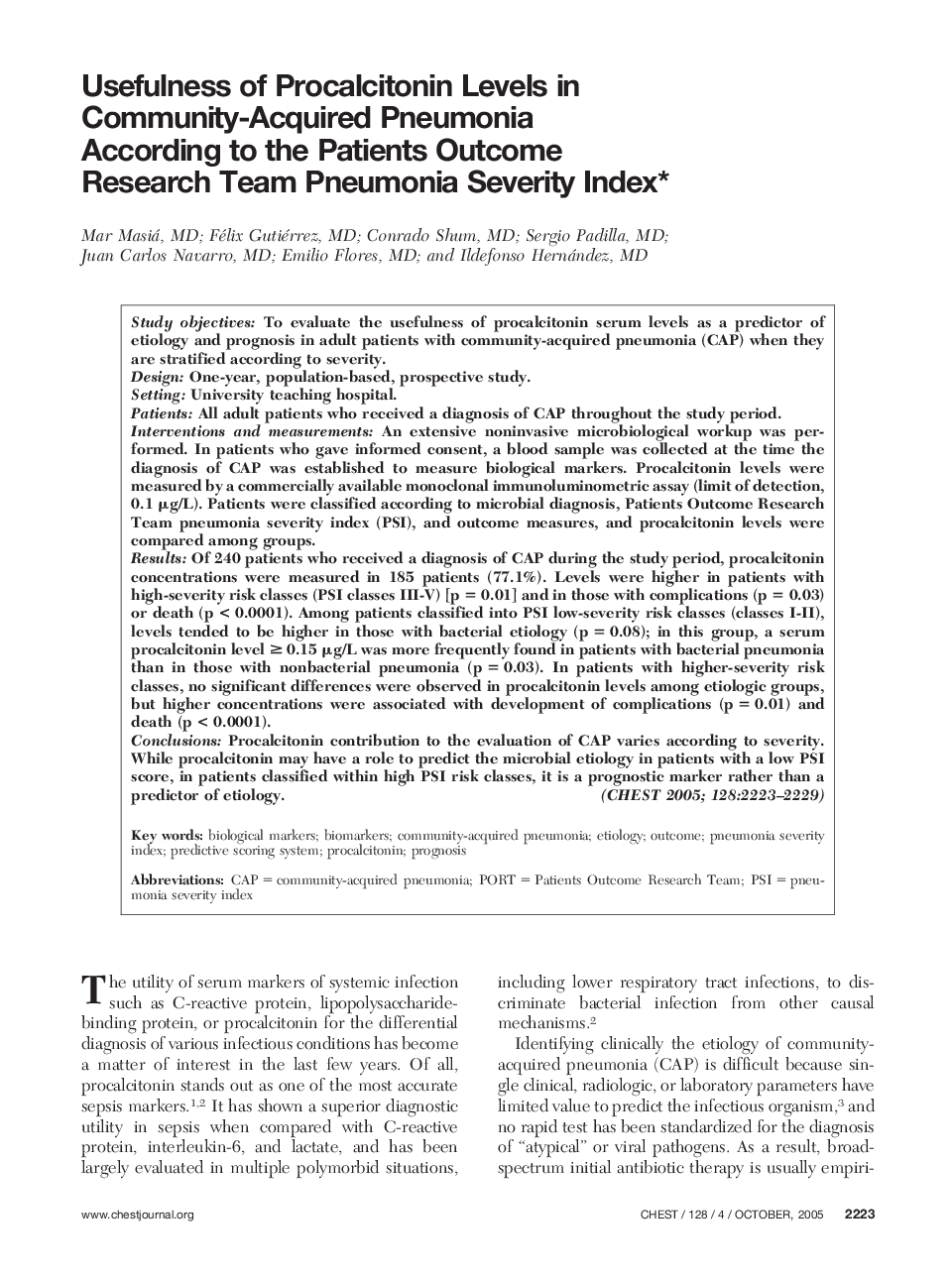| کد مقاله | کد نشریه | سال انتشار | مقاله انگلیسی | نسخه تمام متن |
|---|---|---|---|---|
| 2907104 | 1173488 | 2005 | 7 صفحه PDF | دانلود رایگان |

Study objectivesTo evaluate the usefulness of procalcitonin serum levels as a predictor of etiology and prognosis in adult patients with community-acquired pneumonia (CAP) when they are stratified according to severity.DesignOne-year, population-based, prospective study.SettingUniversity teaching hospital.PatientsAll adult patients who received a diagnosis of CAP throughout the study period.Interventions and measurementsAn extensive noninvasive microbiological workup was performed. In patients who gave informed consent, a blood sample was collected at the time the diagnosis of CAP was established to measure biological markers. Procalcitonin levels were measured by a commercially available monoclonal immunoluminometric assay (limit of detection, 0.1 μg/L). Patients were classified according to microbial diagnosis, Patients Outcome Research Team pneumonia severity index (PSI), and outcome measures, and procalcitonin levels were compared among groups.ResultsOf 240 patients who received a diagnosis of CAP during the study period, procalcitonin concentrations were measured in 185 patients (77.1%). Levels were higher in patients with high-severity risk classes (PSI classes III-V) [p = 0.01] and in those with complications (p = 0.03) or death (p < 0.0001). Among patients classified into PSI low-severity risk classes (classes I-II), levels tended to be higher in those with bacterial etiology (p = 0.08); in this group, a serum procalcitonin level ≥ 0.15 μg/L was more frequently found in patients with bacterial pneumonia than in those with nonbacterial pneumonia (p = 0.03). In patients with higher-severity risk classes, no significant differences were observed in procalcitonin levels among etiologic groups, but higher concentrations were associated with development of complications (p = 0.01) and death (p < 0.0001).ConclusionsProcalcitonin contribution to the evaluation of CAP varies according to severity. While procalcitonin may have a role to predict the microbial etiology in patients with a low PSI score, in patients classified within high PSI risk classes, it is a prognostic marker rather than a predictor of etiology.
Journal: Chest - Volume 128, Issue 4, October 2005, Pages 2223–2229